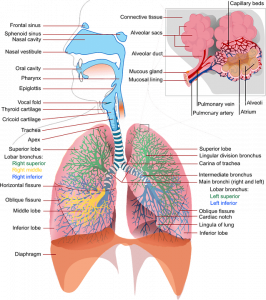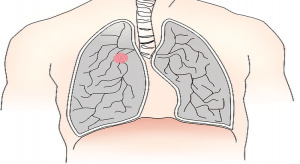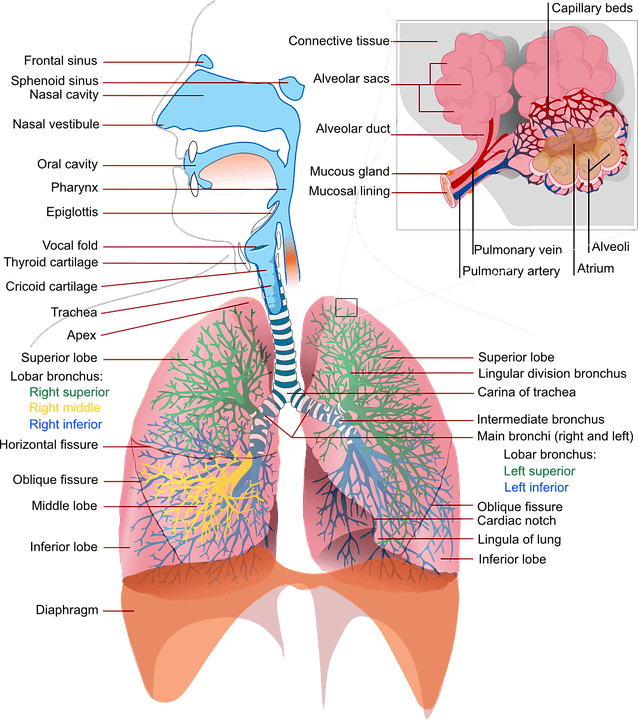Table of Contents
Improve Your Lung cancer survival rate
Many criteria can affect your lung cancer survival rate: lifestyle, stage at diagnosis, type of tumor and treatment. Age of the patient also plays a role in the prognosis. This malignant tumor tends to affect people in the middle of their fifties or sixties. Smoking accounts for 80% to 90% of cases.
Types of lung cancer
There are two types of lung cancer: small cell and non- small cell lung cancers. They grow and spread differently in the body. Therefore, each type has different survival rates.
 Small cell lung cancer (SCLC). This is the most dangerous form of lung cancer; representing approximately 20% of all cases. At the time of diagnosis, the risk of the tumor to have already spread elsewhere in the body is high. SCLC grows rapidly and is often impossible to treat it with surgery; chemotherapy and radiotherapy are often used. Your lung cancer survival rate is slim if you have this type of the tumor.
Small cell lung cancer (SCLC). This is the most dangerous form of lung cancer; representing approximately 20% of all cases. At the time of diagnosis, the risk of the tumor to have already spread elsewhere in the body is high. SCLC grows rapidly and is often impossible to treat it with surgery; chemotherapy and radiotherapy are often used. Your lung cancer survival rate is slim if you have this type of the tumor.
Non-small cell lung cancer (NSCLC). This form accounts for about 80% of cases. It is detected and treated more easily than small cell cancers. It develops more slowly; therefore less apt to cause metastases. This category includes 3 main subgroups: adenocarcinoma, squamous cell carcinoma and undifferentiated large cell carcinoma. There are other forms, but they are very rare.
Lung cancer survival rates
This cancer is among the most deadly malignant tumors in the world. Lung cancer survival rate, 5 years after diagnosis, of people with mid or advanced stages is 17% for women and 14% for men. Even if the person responds well to the treatment initially, relapses are common in the years or months that follow. One of the main reasons is because when the symptoms finally appear, the disease is most of the times already advanced. All this leads to a “dark prognosis”.
Dark prognosis
About 85% of people who develop lung cancer end up dying of the disease. Thus, when a person is diagnosed with a lung tumor, he or she has a 15% chance of living for 5 years or more. However, this figure varies greatly according to many criteria and in particular the stage of the tumor at diagnosis. Therefore early detection is vital. When the diagnosis is done at the end stage, it invariably leads to death in almost all cases.
Your Lung Cancer survival rate can be better if:
- You are a woman (18% compared with 13% for men);
- The cancer was detected at an early stage;
- The tumor affects little or no lymph node;
- The tumor is small (less than 3 cm);
- The cancer was completely removed by surgical therapy (unfortunately only one third of the cases, the least advanced, can be operated).
On the other hand, your lung cancer survival rate can be less favorable in the following cases:
- Chronic insomnia;

- Severe loss of appetite
- Considerably weight loss;
- The tumor has developed on the upper part of the lung near the vertebral column (Pancoast tumor), making surgical intervention very difficult;
- The cancer is metastatic; death is even more certain if the metastases are located in the brain or the liver.
The cancer is associated with pulmonary pathologies such as: pneumonia, pleurisy, and chronic obstructive pulmonary disease, etc.
The good news you can considerably reduce your risk. 92% of deaths due to bronchopulmonary cancer in men and 71% of deaths in women are attributable to tobacco. So, avoiding cigarette smoking is the most effective way to prevent this deadly disease.
 Survival rates of lung cancer vary according to the stages
Survival rates of lung cancer vary according to the stages
As already mentioned above, your lung cancer survival rate depends in part on the stage at which the cancer is diagnosed, as well as the type of cancer involved.
Non-small cell lung cancer survival rates by stage
| Stages of non-small cell lung cancer | 5-year Survival rates |
| Ia – tumor less than 3 cm | 50 % |
| Ib – tumor is between 3 and 5 cm or has spread to the pleura or associated with an obstructive pneumopathy | 45% |
| IIa – tumor is between 5 and 7 cm with possible metastases in the regional lymph nodes | 30 % |
| IIb – the cancer has metastasized in the thorax, diaphragm, pleura, pericardium or presence of pulmonary nodules in the same lobe | 30% |
| IIIa – the tumor has increased to more than 7 cm in size and has spread in the mediastinum, pleura, bronchus, lymph nodes, and vertebra … | 15% |
| IIIb – as in IIIa there is presence of nodules or metastases in another lobe of the affected lung or on the opposite side to the side of the primary tumor | 5% |
| IV – the cancerous cells have disseminated or have metastasized in the opposite lung or on the pleura with presence of malignant pleural effusion | 1% |
Survival to Small Cell Lung Cancer by Stage
| Stages of small cell lung cancer | 5-year Survival rates |
| Limited stage – the tumor confined to the thorax: lung, mediastinum and local lymph nodes on the same side, which can be treated by radiotherapy. | Between 16 months to 2 years |
| Extended Stage – the tumor has spread in the other lung, lymph nodes, liver, brain, bone … | Between 6 months to 1 years |



